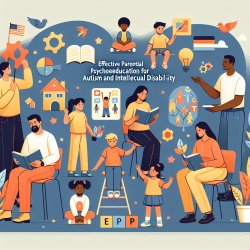Introduction
In the realm of neuroscience, the concept of neuroplasticity has emerged as a beacon of hope, particularly in the context of therapeutic interventions for children. Albrecht Bethe's groundbreaking research on nerve fiber regeneration and functional changes in the human brain has paved the way for a paradigm shift in how we approach therapy, especially in speech-language pathology. This blog explores how practitioners can harness the power of neuroplasticity to improve therapeutic outcomes for children, encouraging further research and implementation of these transformative concepts.
The Legacy of Albrecht Bethe
Albrecht Bethe's work at the University of Frankfurt am Main was instrumental in challenging the long-held belief that the human brain lacked the capacity for functional repair and adaptation. His research on nerve fiber plasticity laid the foundation for modern-day neurorehabilitation and neuroprosthetics. By demonstrating the brain's ability to reorganize and adapt following injury, Bethe's studies have profound implications for therapeutic practices, particularly in the field of speech-language pathology.
Implications for Speech-Language Pathology
Understanding and leveraging neuroplasticity can significantly enhance the effectiveness of speech-language therapy for children. Here are some key takeaways for practitioners:
- Customized Therapy Plans: By recognizing the brain's capacity for change, therapists can develop personalized intervention plans that target specific neural pathways, enhancing the child's ability to acquire and retain new skills.
- Emphasis on Repetition and Practice: Neuroplasticity thrives on repetition. Encouraging consistent practice of speech and language exercises can help reinforce neural connections, leading to more substantial improvements in communication skills.
- Incorporating Multisensory Approaches: Engaging multiple senses during therapy sessions can stimulate different areas of the brain, promoting a more comprehensive and effective learning experience for children.
- Family Involvement: Involving family members in the therapeutic process can create a supportive environment that reinforces learning and encourages the application of skills in everyday contexts.
Encouraging Further Research
While Bethe's research provides a strong foundation, there is still much to explore in the realm of neuroplasticity and its applications in therapy. Practitioners are encouraged to engage in ongoing research to uncover new insights and techniques that can further enhance therapeutic outcomes for children. Collaborating with neuroscientists and other professionals in the field can lead to innovative approaches that harness the full potential of the brain's plasticity.
Conclusion
Albrecht Bethe's pioneering work on neuroplasticity offers a transformative perspective on therapeutic practices for children. By embracing the brain's inherent ability to adapt and change, speech-language pathologists can develop more effective interventions that lead to improved outcomes. As we continue to explore the vast potential of neuroplasticity, we open the door to a future where every child can achieve their fullest potential.
To read the original research paper, please follow this link: From ‘Nerve Fiber Regeneration’ to ‘Functional Changes’ in the Human Brain—On the Paradigm-Shifting Work of the Experimental Physiologist Albrecht Bethe (1872–1954) in Frankfurt am Main.










